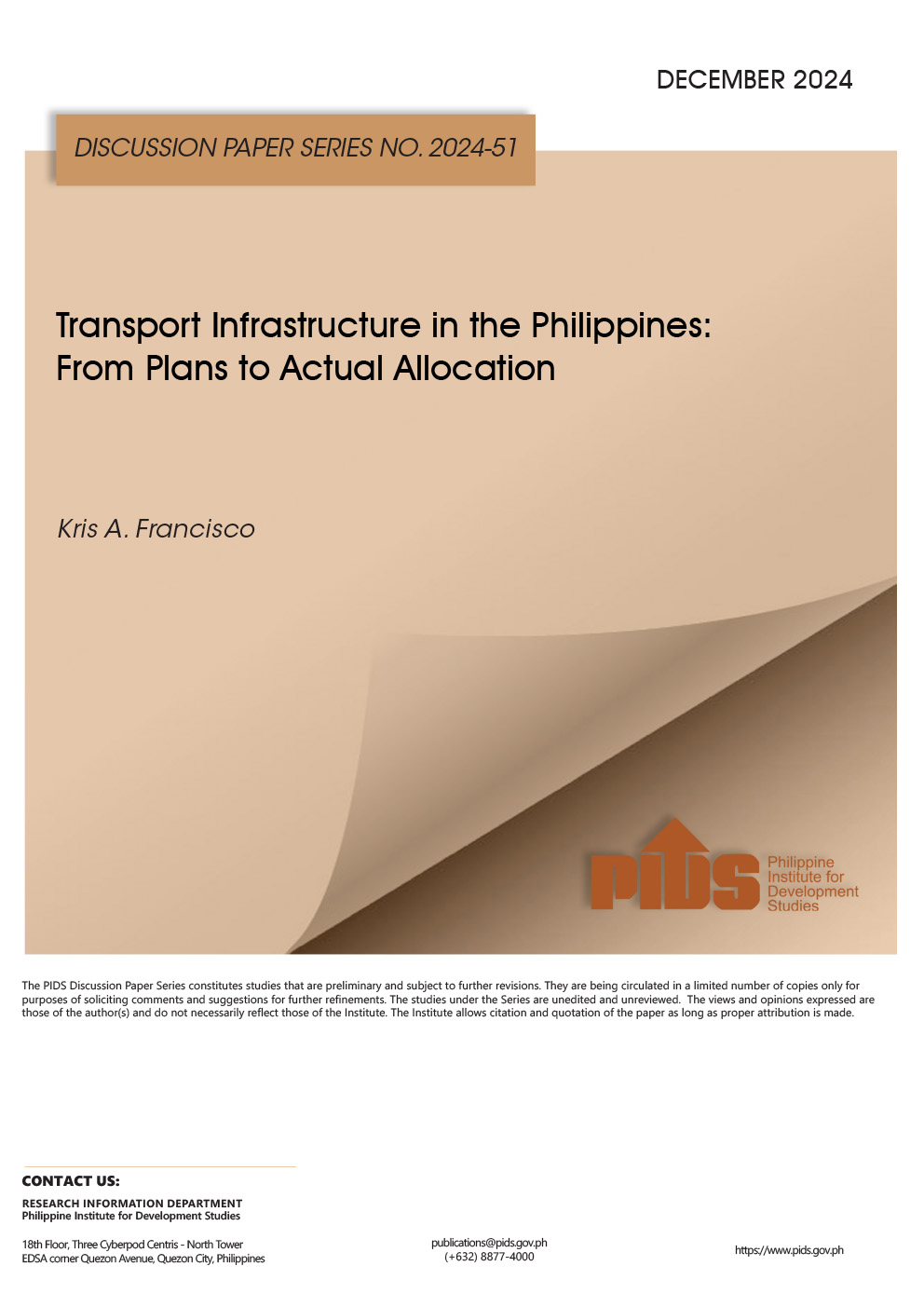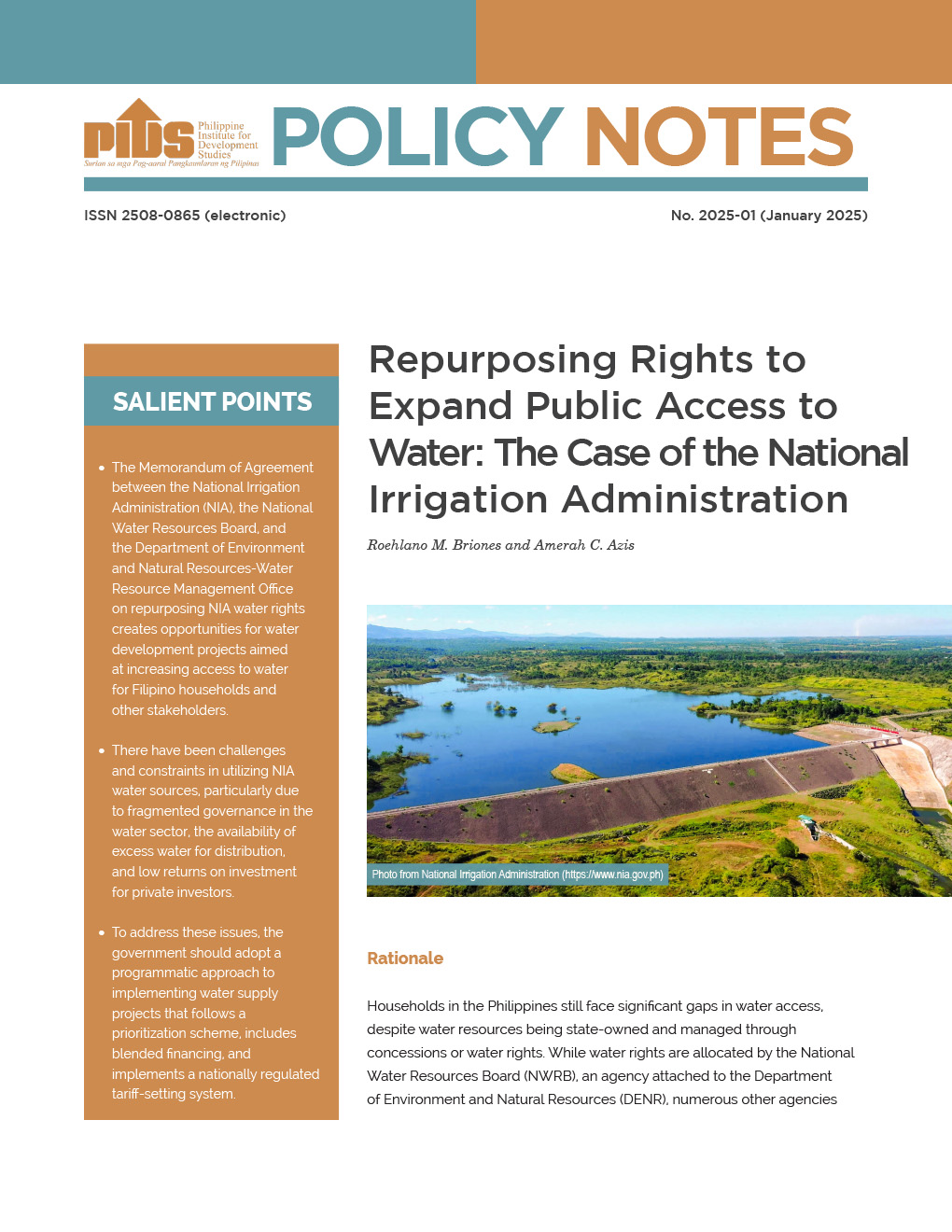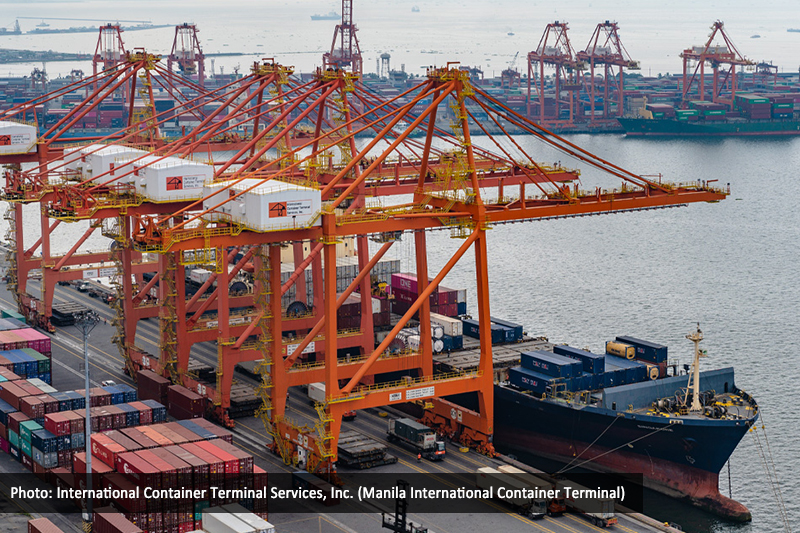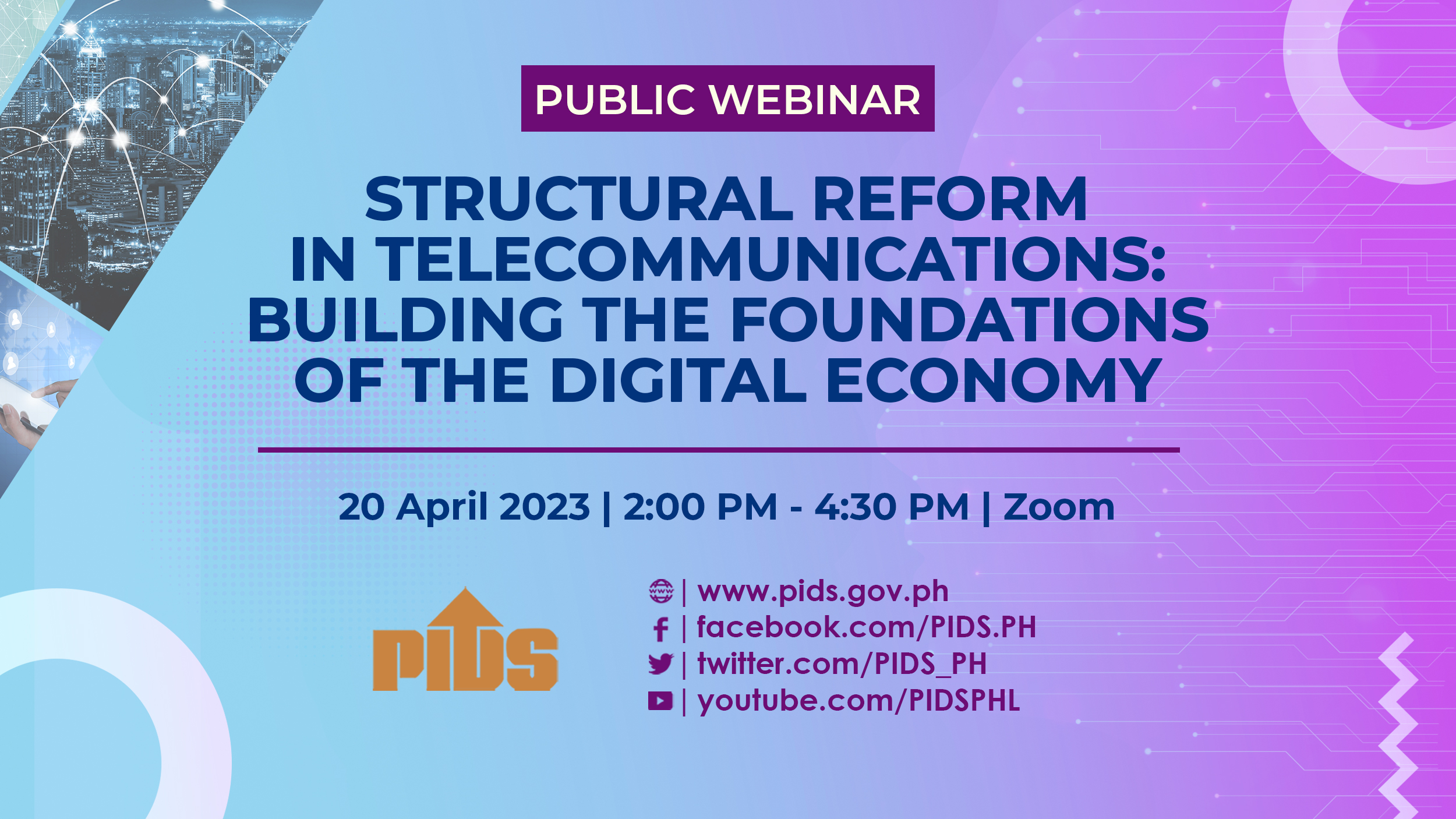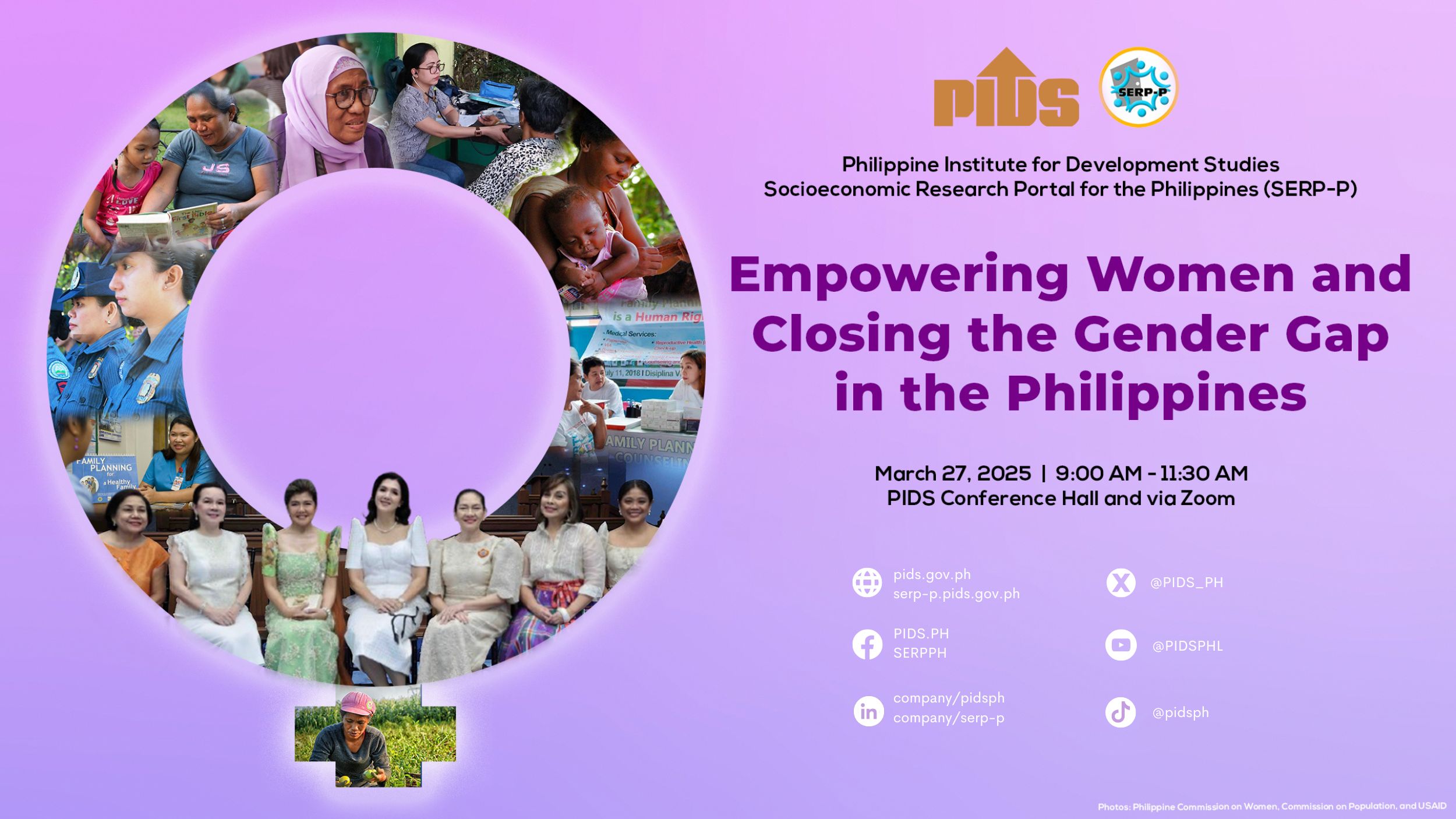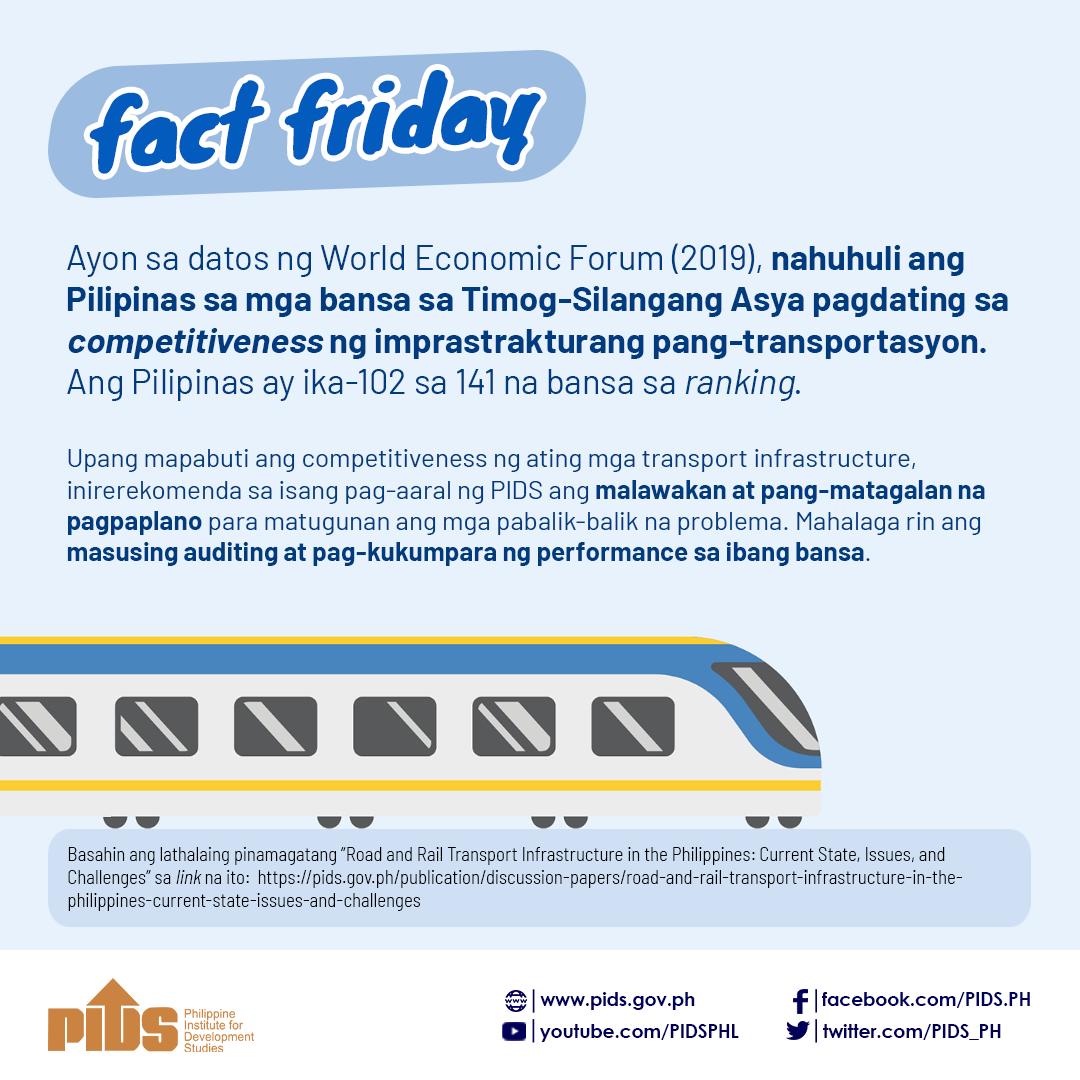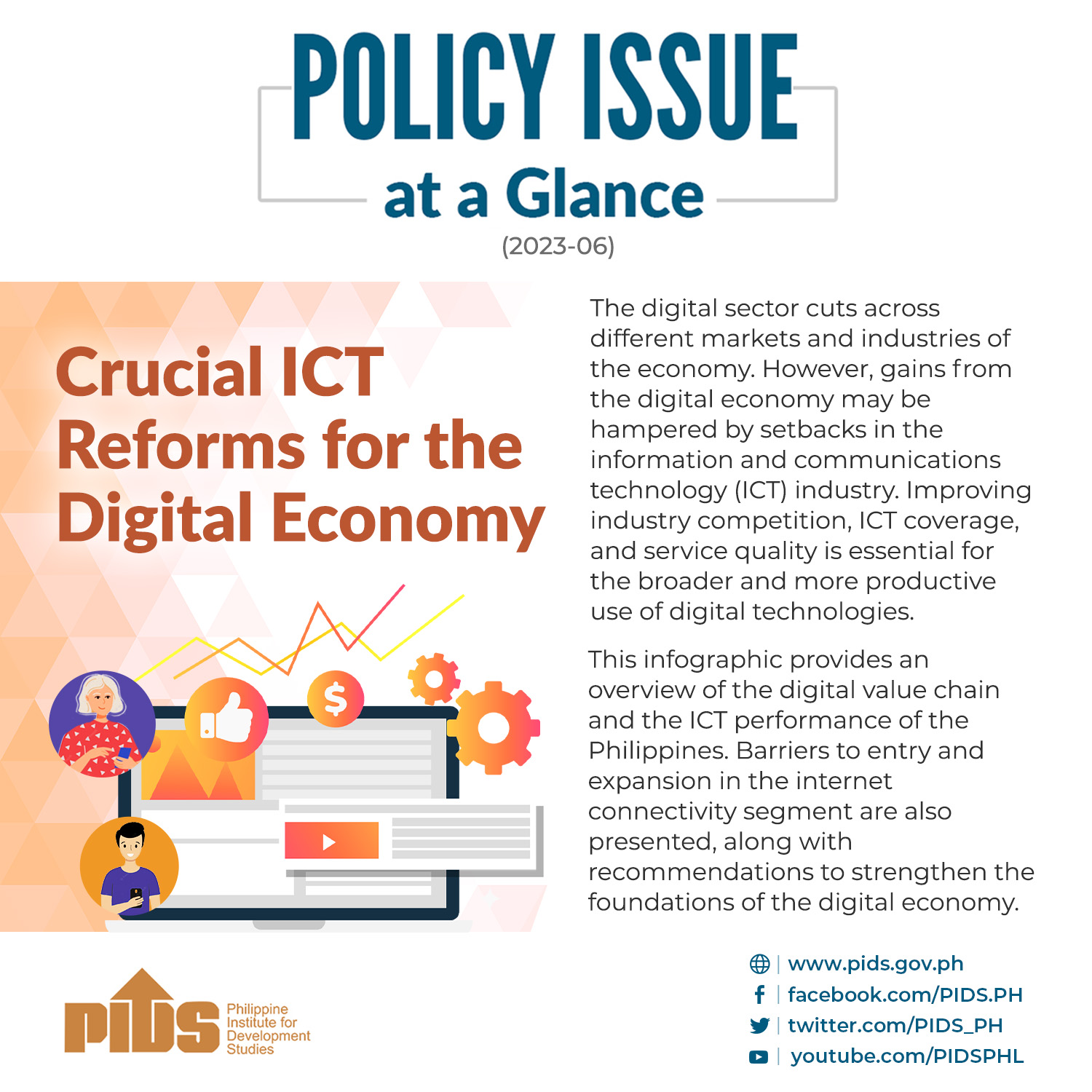THE FLAGSHIP ‘Build, Build, Build’ (BBB) program is addressing the Philippines’ infrastructure deficit in telecommunications and transportation, but is less responsive to the needs of social programs, a government think tank said.
According to a study released by the Philippine Institute for Development Studies (PIDS), ‘Build, Build, Build’ supports the key development goals of the government as laid out in the medium-term Philippine Development Plan (PDP).
“The program is particularly responsive in the areas of information and communications technology [ICT], transport and mobility, water resources, and power and energy,” according to Janet S. Cuenca, a former research fellow at PIDS, in a statement Wednesday.
However, the study found that there were “no major capital projects addressing the PDP targets in the area of social infrastructure (e.g., school buildings and health facilities), and technology adoption and innovation.”
The PDP 2017-2022 is the medium-term socioeconomic development plan that lays out the government’s targets and priorities.
Citing the study, known as “Review of the ‘Build, Build, Build’ Program: Implications on the Philippine Development Plan 2017-2022,” PIDS noted that internet connectivity has improved according to the 2018 Socioeconomic Report of the National Economic and Development Authority (NEDA).
ICT-related projects that have been rolled out include the Luzon Bypass Infrastructure Project and the National Broadband Program. The former established a high-speed information highway meant to improve the speed, affordability and accessibility of broadband internet. Meanwhile, the National Broadband Program installed fiber optic cable and wireless systems.
“A measure of how far or near the various projects under the BBB program in attaining the targets (i.e., actual accomplishment vis-à-vis targets) is a useful information that can prompt implementers to identify issues and challenges (i.e., including enabling and stumbling factors) and subsequently draw up appropriate policy measures,” Ms. Cuenca said.
In the transport sector, PIDS noted that travel time has been reduced while mobility increased in parts of the country, according to a 2019 NEDA report. Projects in this space include the Binalonan to Pozorrubio Section of Tarlac-Pangasinan-La Union Expressway, which cut travel time to 45 minutes from 150 minutes previously on the Tarlac-Pozorrubio segment.
The PIDS noted that the government’s plan to invest in the construction and rehabilitation of small-scale and community-based irrigation projects is in line with the goal to improve the productivity and sustainability of the agriculture sector.
As of August, there were six ongoing major irrigation projects, she said, the largest among them the P14.8-billion Jalaur River Multipurpose Project – Stage II in Iloilo and the P13.4-billion Balog-Balog Multipurpose Project Phase II in Tarlac.
The Jalaur River project is expected to help 22,000 farmers and their families in 23 municipalities and two cities address irrigation issues, while the water project in Tarlac is scaled to provide irrigation services for 34,500 hectares.
Government programs to provide electricity to remote areas are also aligned with the goal to power up 100% of all households by 2022, according to the report.
Infra push seen closing telecommunications, transportation gaps

